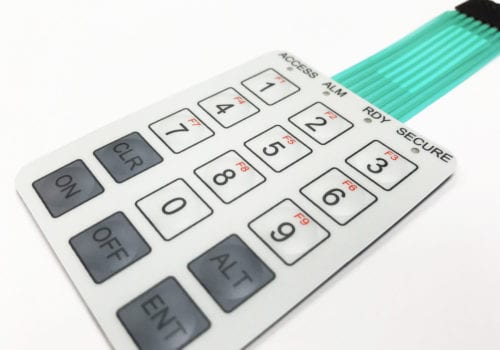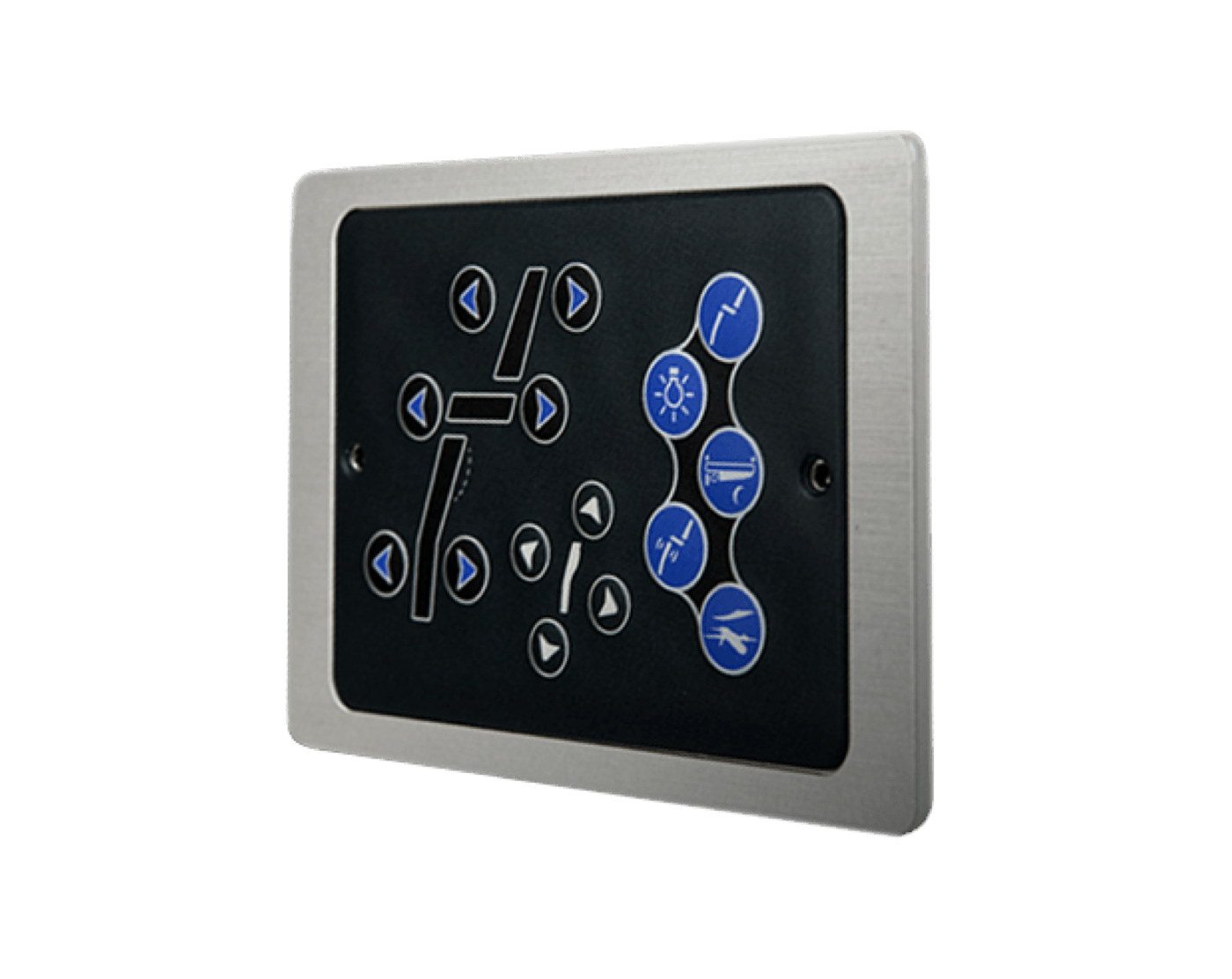Working with a qualified membrane switch manufacturer ensures adherence with technical standards.
Working with a qualified membrane switch manufacturer ensures adherence with technical standards.
Blog Article
All Regarding Membrane Layer Change: Recognizing Its Layout and Performance
When you assume about the control user interfaces in modern-day devices, membrane layer buttons frequently come to mind. Allow's explore what collections membrane layer switches over apart from other control systems.
What Are Membrane Layer Buttons?

Their seamless nature makes them easy to tidy and resistant to dirt and moisture, an important attribute in many environments. Membrane buttons can also be customized concerning form, dimension, and graphics, allowing manufacturers to create special interfaces customized to details items. And also, they're lightweight and slim, which helps in minimizing the general mass of devices. Generally, membrane buttons play a substantial function in boosting individual experience across a vast selection of applications.
Exactly How Membrane Changes Work
When you press a secret on a membrane layer button, it turns on a straightforward yet efficient device. The top layer, commonly constructed from versatile product, lowers onto a conductive layer below it. This action bridges the void in between conductive traces, completing an electric circuit. As quickly as the circuit shuts, it sends out a signal to the device's controller, which analyzes your input.
You'll discover that the responsive feedback varies based upon the button design, supplying either a soft click or an extra obvious feedback. As soon as you launch the trick, the membrane go back to its original position, reopening the circuit and stopping the signal. This process occurs nearly instantly, guaranteeing a responsive customer experience.
Membrane layer buttons are popular because of their longevity and resistance to dust and dampness, making them ideal for various applications, from house devices to medical gadgets. Understanding this operation aids you appreciate their widespread use.
Key Elements of Membrane Switches
Comprehending the crucial elements of membrane layer switches is fundamental for understanding their performance and layout. At the core, you'll find the graphic overlay, which supplies the aesthetic user interface for customers. Underneath that, there's a spacer layer that separates the circuit layers, guaranteeing that they do not make contact until pushed. The circuit layer is where the magic takes place; it is composed of conductive traces that complete the circuit when you push the switch. Another essential aspect is the glue support, allowing the button to follow surfaces safely. The safety layer guards against environmental elements and put on, expanding the switch's life expectancy. Each element plays a significant duty in making sure dependable performance and individual interaction. By recognizing these elements, you'll acquire understanding into exactly how membrane layer changes run and their significance in different applications.
Materials Used in Membrane Layer Switch Over Design
The performance and durability of membrane switches over greatly depend upon the products used in their layout. You usually run into polyester and polycarbonate as primary substrates because of their exceptional stamina and versatility. These products stand up to scrapes and chemicals, making them perfect for demanding settings.
The conductive layers often use silver or carbon, picked for their reliability and conductivity. membrane switch manufacturer. Silver supplies premium efficiency, while carbon is an economical alternative. For the overlay, you might take into consideration a matte or glossy coating, depending upon your aesthetic demands and customer experience
Adhesives play a crucial function also; they bond layers firmly and assure long life. Make particular to pick adhesives that endure ecological elements like temperature and humidity. Finally, don't neglect the significance of a great printing method for graphics, as it improves both functionality and visual allure. Selecting the ideal products will certainly ensure your membrane switch stands the examination of time.
Style Considerations for Membrane Switches
While making membrane layer buttons, it's important to consider numerous elements that affect their capability and user experience. Start by concentrating on the layout and button dimension; make specific they're user-friendly and very easy to browse. Think about the responsive feedback you desire to offer-- will customers need a recognizable click or a softer touch? In addition, consider the products you'll use, as they'll influence longevity and appearances.
Validate your layout fits ecological aspects, like wetness or temperature variations, which might influence efficiency. By meticulously taking into consideration these elements, you'll create a membrane button that boosts use and complete satisfaction.
Applications of Membrane Layer Switches
Membrane layer switches are functional parts found in various applications, from commercial equipment to customer electronic devices. You'll see their effect in machines that call for long lasting interfaces and in devices that gain from smooth styles. Understanding these applications aids you value the performance and functionality of membrane buttons in everyday modern technology.
Industrial Equipment Usage
When you're aiming to enhance the performance of commercial tools, membrane layer buttons offer a dependable service that integrates sturdiness with easy to use design. These switches are best for extreme environments, providing resistance to dirt, wetness, and chemicals. You'll discover them in control panels for producing equipments, a/c systems, and clinical devices, where accuracy and responsiveness are vital. Their reduced profile means they fit effortlessly into various equipment, saving important space while maintaining ease of usage. With customizable graphics and backlighting alternatives, you can create an intuitive user interface for operators, boosting effectiveness and safety and security. Plus, their long life-span lowers upkeep expenses, making them additional info a clever investment for your industrial applications. Accept membrane layer switches to enhance your procedures and enhance general performance. visit their website
Consumer Electronics Assimilation
In the domain of customer electronics, membrane layer buttons play an important role in improving individual communication and gadget performance. You'll locate them in tools like microwaves, remote controls, and gaming consoles, providing a seamless method to communicate with technology. Their smooth layout permits simple assimilation right into different items, making controls intuitive and user-friendly. With their capacity to integrate graphics and backlighting, you can appreciate a modern-day visual that complements the device's general look. Membrane buttons additionally ensure longevity and resistance to dust and moisture, prolonging the life-span of your electronic devices. By choosing membrane layer switches, you boost not simply the capability yet additionally the design of your gadgets, making everyday communications smooth and pleasurable.
Benefits and Downsides of Membrane Switches
While membrane layer buttons use a series of benefits, they additionally include some drawbacks that you must consider. One considerable advantage is their portable layout, making them excellent for space-constrained applications. They're also economical, providing a durable remedy with a reduced production cost. On top of that, their smooth surface is simple to tidy, improving hygiene in atmospheres like hospitals.

Nonetheless, there are negative aspects. Membrane buttons can have a shorter life expectancy compared to mechanical switches, especially under heavy usage. They can also be less responsive, which might impact individual feedback during operation. Furthermore, if damaged, repairing them can be tough and frequently needs full substitute. Inevitably, their sensitivity to extreme temperature levels and ecological conditions might restrict their efficiency in specific settings. Stabilizing these pros and disadvantages will certainly aid you establish if membrane layer switches are the right suitable for your job.
Regularly Asked Inquiries
How Lengthy Do Membrane Switches Over Generally Last?
Membrane layer changes typically last between 5 to one decade, depending on usage and ecological conditions. You'll desire to review variables like wear, exposure to dampness, and temperature Click This Link changes to assess their longevity efficiently.
Can Membrane Layer Changes Be Custom-made for Certain Styles?
Yes, you can tailor membrane buttons to fit details layouts (membrane switch manufacturer). You'll have the flexibility to choose shades, forms, and designs that match your task's needs, guaranteeing they blend seamlessly with your overall aesthetic
What Is the Cost Range for Membrane Layer Switch Over Production?
The cost array for membrane button production generally drops between $1 and $10 per unit, relying on aspects like design complexity, amount, and products. You can get quotes from suppliers to locate the very best alternative.

Are Membrane Layer Switches Waterproof or Immune?
Membrane layer switches can be made to be water-proof or resistant, depending on products used and building and construction methods. If you need them for wet environments, guarantee you specify those demands throughout the layout procedure.
Just How Do Membrane Layer Changes Compare to Typical Buttons?
Membrane layer buttons are normally thinner and a lot more versatile than conventional switches, providing a smooth design. They're often simpler to clean and incorporate, but may not supply the tactile responses you're made use of to with mechanical alternatives.
Conclusion

Report this page